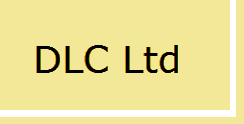One of the key features of knowledge sharing is the lessons learned technique. It is an obvious thing to want your organisation to be good at, but it is a surprisingly difficult thing to do well.
Here are some of the reasons why, and what you can do about them
- People’s attention moves on. Once the activity or project is over, people have other things to do, and going back over old work seems as much fun as cold rice pudding. Instead, make sure the questions you are going to use to elicit the lessons are known from the start. It makes the burden less at the end, enriches the participants’ experience, and the mixture of work and reflexion usually makes the activity/project go better
- It’s hard to convert people’s experience into lessons anyone else wants to learn. Find the best conversational writer in your team, or think about making the record an audio visual one instead of textual. Above all the lessons need to be engaging: fun to read, and relevant to apply later.
- People tend to prefer to ask for help than to read ready-made answers. When I worked at the Motor Neurone Disease Association I was amazed to find that discussion forums were much more used than databases of solutions, and at a KM conference I found the metrics on this were exactly the same for Shell with thousands of staff as for the Association where we had barely 100. If the extra cost of making the experienced people available is too great, go for a hybrid solution: make the recorded solution as personable as possible
- A lesson learned can become fossilised very quickly. Instead let it breathe by allowing comments from future users – what happened when they tried to apply it later? There are environments (health and safety, regulatory and so on) where lessons have to be urgently formalised as rules, but keep them “juicy” where you can
And here’s my mnemonic for increasing the lessons’ chances of having value – FARE.
- make them Findable
- when people know where the lessons are make them want to go there by making them Accessible
- make sure when they get there the lessons are Readable – fun to read or view and think about
- record them in a way that Encourages the reader or viewer to apply them.
The Lessons Learned technique is one of the building blocks for good knowledge management: the effort, applied selectively, pays dividends for the whole organisation!
For more help with lessons learned exercises contact me at
dion@dionlindsayconsulting.com
+44 (0) 7540 659255
+44 (0) 1604 686797
or direct message me on twitter @dionl
Best wishes and good km-ing!
Dion
